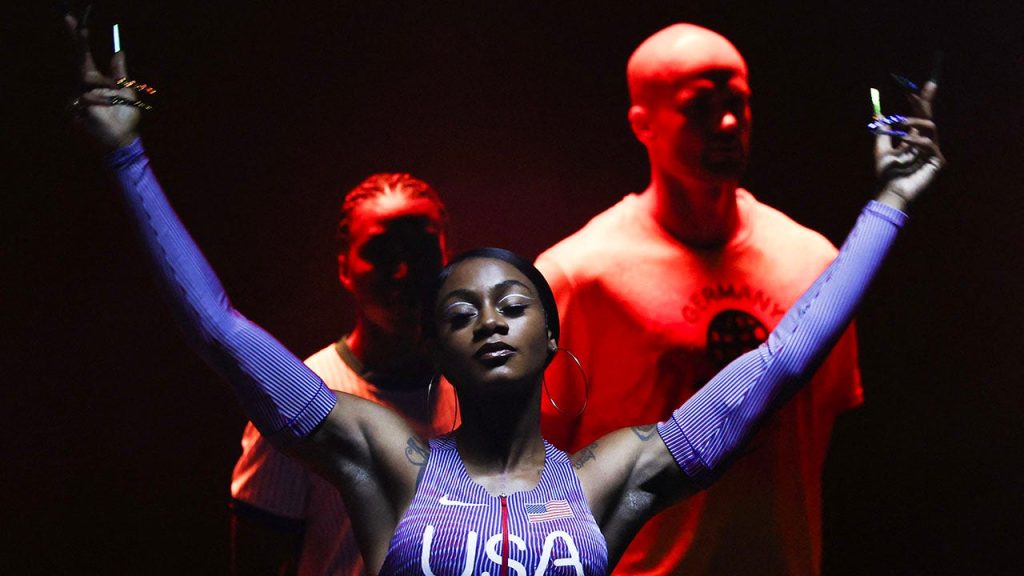American Olympic track and field athletes are expressing their outrage over a red, white, and blue leotard that they are supposed to wear for the Paris Games this summer. The garment barely covers the bikini line, with no apparent matching shorts included in the uniform. Nike consulted with several athletes, including sprinters Sha’Carri Richardson and Athing Mu, while designing the uniforms, but the final product did not meet the approval of all athletes. Nike executive John Hoke stated that the company worked directly with athletes throughout the design process, with a focus on athlete options and choices driving the planning process.
The uniform controversy was sparked when a post from Citius Mag featuring the revealing leotard on a mannequin circulated on social media, drawing immediate pushback from athletes. Olympic hurdler Queen Harrison joked about the situation, while Paralympian long jumper Jaleen Roberts expressed concern over the outfit, stating, “This mannequin is standing still and everything’s showing…imagine MID FLIGHT.” Retired track athlete Lauren Fleshman criticized the uniform as a “costume born of patriarchal forces” that no longer have a place in women’s sports. Olympic gold medalist pole vaulter Katie Moon defended Nike in an Instagram post but acknowledged that the controversial leotard warranted the response it received.
Moon emphasized that athletes have a choice when it comes to their attire and should not be criticized for their decisions. She stated that attacking the choice of wearing a revealing leotard as ‘sexist’ undermines the autonomy and agency of female athletes to make decisions based on their comfort and performance. Moon shared her personal preference for minimal fabric when competing and reassured others that she tried on the controversial attire without any concerns about wardrobe malfunctions. While Moon defended Nike’s design process, she acknowledged that the presentation of the leotard on a mannequin may have contributed to the controversy, emphasizing that every body is different and perceptions may vary.
The controversy surrounding the revealing leotard worn by American Olympic track and field athletes highlights ongoing discussions about gender, representation, and choice in sports apparel. While some athletes defended the uniform and emphasized the importance of empowering women to make decisions based on their comfort and confidence, others criticized the outfit as perpetuating outdated stereotypes and objectification. As discussions continue, it remains essential for athletes, designers, and sports organizations to prioritize inclusivity, diversity, and respect for individual choices in athletic attire. The controversy serves as a reminder of the ongoing work needed to ensure that athletes feel supported, empowered, and respected in their sporting endeavors.


